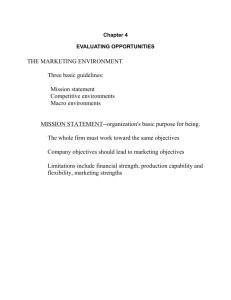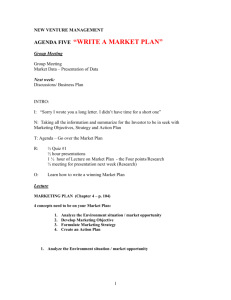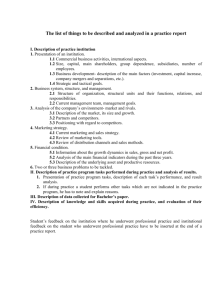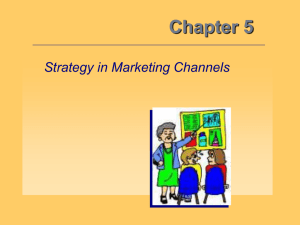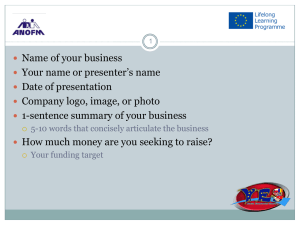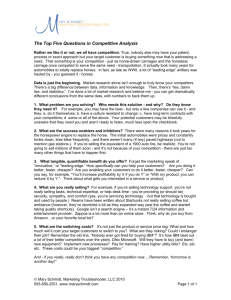3.1 B Innovation - Secondary Social Science Wikispace
advertisement
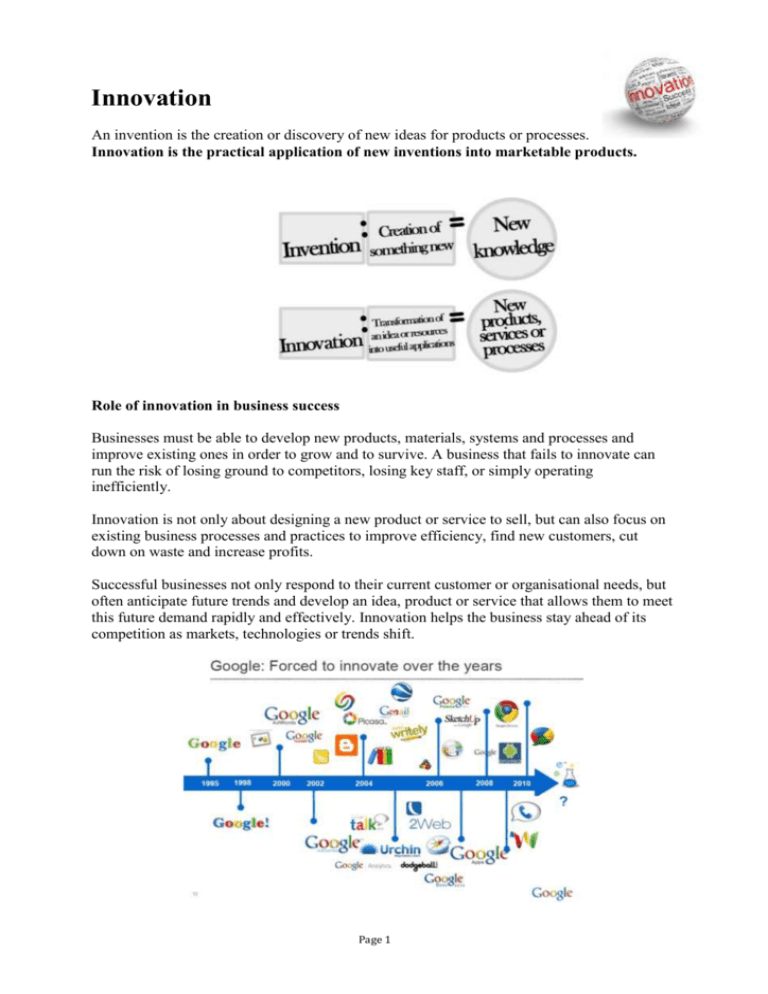
Innovation An invention is the creation or discovery of new ideas for products or processes. Innovation is the practical application of new inventions into marketable products. Role of innovation in business success Businesses must be able to develop new products, materials, systems and processes and improve existing ones in order to grow and to survive. A business that fails to innovate can run the risk of losing ground to competitors, losing key staff, or simply operating inefficiently. Innovation is not only about designing a new product or service to sell, but can also focus on existing business processes and practices to improve efficiency, find new customers, cut down on waste and increase profits. Successful businesses not only respond to their current customer or organisational needs, but often anticipate future trends and develop an idea, product or service that allows them to meet this future demand rapidly and effectively. Innovation helps the business stay ahead of its competition as markets, technologies or trends shift. Page 1 Constantly innovating and improving business practices is also likely to help attract better staff members and retain existing staff, which is crucial to the long-term health and performance of a business. Types of Innovation Breakthrough innovation ~ an “out of the blue” solution or discovery that cannot be compared to existing practices or techniques. These innovations use new technologies and create new markets. Cost-reducing innovation ~ improved processes that reduce the cost of production for a business or industry. Process innovation ~ changes to the way production takes place. Product innovation ~ new creations or the development and improvement of existing products. This type of innovation is sometimes called incremental innovation. It is evolutionary in nature and generally leads to substitutes to existing products. These innovations are generally in response to consumer demand. Research and Development The pace of technological change, combined with the rising wants and spending power of consumers, has forced businesses to respond by investing in research and development (R&D). This is the scientific research and technical development of new products and processes. Research is the investigation and discovery of new ideas in order to solve a problem or create an opportunity. Methods used to generate new ideas include laboratory research, product evaluation of a business’s own and its competitors’ products, and focus groups designed to think up or respond to new ideas. Development involves changing ideas into products, materials, systems or processes. One of the problems with development is the time scale involved. Some projects take many years to complete and success cannot be guaranteed. Factors affecting the level of R&D and innovation by a business The nature of the industry ~ rapidly changing technologies in industries such as pharmaceuticals, computer software and hardware and motor vehicles call for substantial investment in R&D by leading firms. Other businesses such as hotels and hairdressing would need to spend far less as the scope for innovation is more limited. R&D spending plans of competitors ~ in highly competitive markets, it is necessary for a business to innovate as much as or more than competitors if market share is to be maintained. However, a monopoly may limit R&D spending if it believes that the risk of a more technically advanced competitor entering the market is limited. The risk profile or culture of the business ~ the attitude of the management to risk and whether shareholders are prepared to invest for the long term will have a significant effect on the amount a business can on R&D. Government policy towards grants to businesses and universities for R&D programmes, and the range and scope of tax allowances for R&D will influence a firm’s decisions about its level of R&D. Page 2 Process of Research & Development Generate ideas Screen ideas and test concepts Prepare product design brief Make and test prototypes. These may be discarded, adapted or adopted Test marketing Full-scale production Promote and launch the product R&D does not always lead to innovation. It is expensive and has an opportunity cost. Inventions do not always translate into products that consumers will buy in a quantity that will make their production profitable. Cultures favouring innovation Risk-taking must be rewarded ~ employees should be encouraged to take risks and attempt initiatives that are beyond the scope of their firm’s traditional operating boundaries. Mistake-making must be tolerated ~ in order to challenge status quo and find better ways to do things, mistakes will be made. Communication must be open ~ everyone in the business should be encouraged to submit suggestions for improvement and they should be taken seriously. Strategies to encourage innovation Give workers greater freedom and resources to explore new ideas. This will encourage them to follow ideas that interest them. o An advantage of this is that workers might initiate fresh ideas that have true potential. This might lead to new products and an increase in revenue. o Another advantage of allowing workers greater freedom in their work is that it will increase motivation, because they feel more valued. This, in turn, may increase Page 3 productivity. A disadvantage is that profitability could fall if ideas do not relate to the firm’s market objectives. This means that the firm’s direction may become confused and lack focus. Encourage interdepartmental innovation discussion. People sharing views may lead to new ideas. o An advantage of interdepartmental discussion is that it would allow the sharing of ideas. This will allow the creation of products that may not have happened previously. This may improve revenue in the longer term. o A disadvantage is that some workers may feel the meetings are unnecessary, and this might reduce motivation. This will raise staff expenses. o Opportunities and risks of innovation Innovation gives the business the opportunity to: Develop unique products Gain competitive advantage Provide alternative and possibly more sustainable income streams Identify new opportunities Improve efficiency of production processes Enhance the business’s reputation These are offset by challenges and costs: The need for financial investment ~ in R&D, extra staffing costs Long timescales Uncertain outcomes The chance that conditions may change during the R&D process, such as competitors launching a similar or better innovation Possibility of failure and the associated impact on reputation Page 4 Page 5

